By Alex Trukan
When trying to attack through the wings, getting the ball wide and creating an opportunity to cross is only part of success. The key to finalising wing play are movements that players make in and around the box just before, and as the ball is crossed. There are various combinations of different runs a single player or small group can make. The aim, however, is based on getting into the goalscoring area as well as creating space around to be able to produce a shot on goal. Regardless of the type of run, it has to be well timed. This might mean accelerating towards the ball or slowing down to arrive at the same time as the cross. With defences being well organised and physically strong, it is important to be clever and look for less popular spaces to finish from as well as different ways to shoot.
One of the more traditional movements in the box are runs by two strikers to finish on the near and far post. Having players in both of those areas increases the opportunities to finalise play. It also provides an opportunity to deliver the ball on the ground or in the air depending on the situations characteristics. Finishing from the far post also forces the goalkeeper to adjust his position to the flight of the ball which might mean turning his body. This will create important extra seconds and increase the chance of scoring.
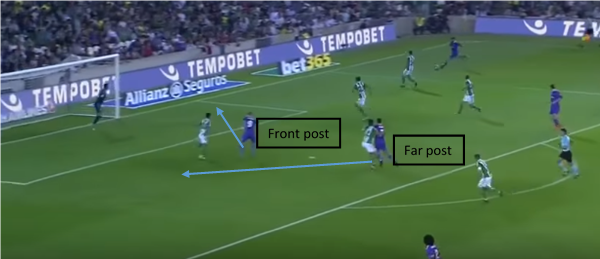
In order to create additional space and pose a problem for the defenders, attackers might choose to make a crossover run. For example, one striker might start in the channel, in line with the near post, and finish on the far post, while the other striker will do the opposite. This will create further challenges for the defenders as they will have to either stay with the attacker or pass the player on zonally.
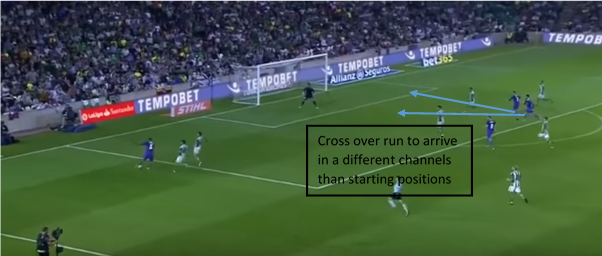
As the two strikers make a crossover run, a third player in the box might pull out onto the edge of the penalty box. This gives him an opportunity to pick up any second balls and provides another option for a cut back cross into space in front of the back line. In addition it can also create more space for the other two strikers as one of the defenders is likely to pull out and follow the run.
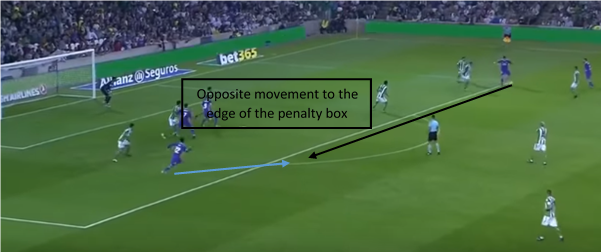
Another important aspect to make the runs in the box more effective are starting positions. Strikers might choose to start the run early and ‘run into’ the centre backs. This gives them more opportunities to adjust to the flight of the ball and generates more power. On the other hand, defenders will have more time to prepare their position and react accordingly.
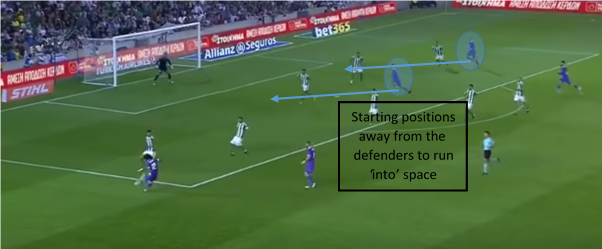
Other option is when a striker is already marked and he makes a run ‘together’ with a defender. This situation is more based on physical qualities – acceleration and power to get past the barrier. In both cases, the space between a goalkeeper and defenders to run into is the key for the striker to make an effective finish.
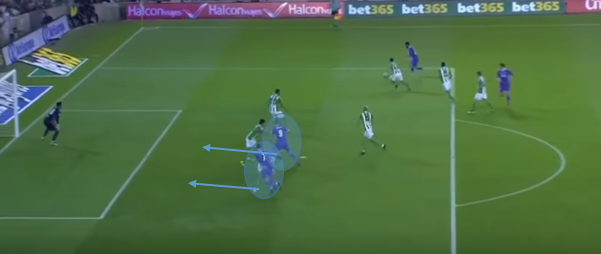
One of the clever movements from the striker is to move away from the ball to create space and then run into it as the ball is being crossed. In this case, starting position of the attacker might be on the outside shoulder of the full back away from the ball. This will cause a problem to solve and potentially create gaps between full back and centre back. These gaps might be then expolited by other players running into the box.
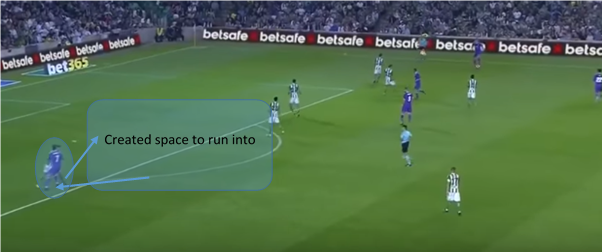
When coaching runs inside the penalty box to finalise from crosses it is important to touch on the psychological side of it. Players should be encouraged to show courage as well as confidence when trying to finish from crosses. The best players in this area show determination to score from any ball played into the penalty box. At the same time, players should be coached to make intelligent and unorthodox runs that pose a problem for the defending team.
By Alex Trukan, Development Coach, Nottingham Forest
@AlexTrukan


